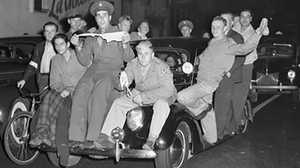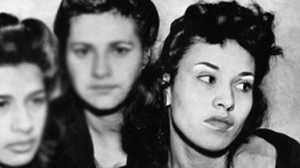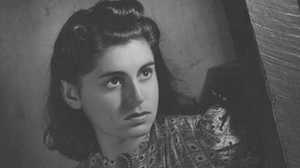Enrique "Henry" Reyes Leyvas (1923-1971)
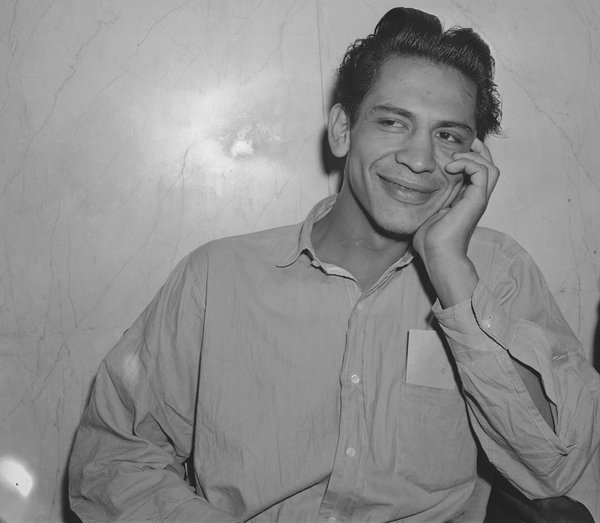
Henry Leyvas was born in Tucson, Arizona, on April 24, 1923. He was the third of ten children born to Guadalupe Reyes and Seferino Gamino Leyvas. His parents had escaped the tumultuous revolution in Mexico and married in Arizona in December 1919. They settled in the 38th Street neighborhood of Los Angeles before moving down to the Long Beach area. Henry was 19 years old when he was arrested for the murder of José Díaz.
Henry Leyvas had a long and troubled history with the Los Angeles police. His first arrest came when he and Sef were pulled over by the police for car theft. The car belonged to their father, but the Leyvas boys were held in jail for three days until their father could prove he owned the car. On another occasion, the brothers were arrested together for assault with a deadly weapon and held for three months before their court appearance. They were cleared on all charges. During Christmas 1941, Leyvas and two others who would be Sleepy Lagoon defendants, Joe Valenzuela and Jack Melendez, were arrested on suspicion of armed robbery. Melendez and Valenzuela were released, but Leyvas was rebooked on assault with a deadly weapon and he pleaded guilty to a lesser charge of simple assault. He was sentenced to three months in jail and given three years probation. While he was still in jail, the police stormed the Leyvas home with drawn weapons and asserted that they had witnessed Henry stealing tires. Upon his release, Leyvas was again arrested with four others, and this time charged with assault and battery, even though the crime occurred two days before his release. Henry was beaten by the police on that occasion. A week later, the Los Angeles police arrested him for fighting and he spent seventy-two hours in jail before he was released. A year before his arrest in the Sleepy Lagoon incident, Leyvas was arrested for a fight that occurred in Santa Barbara. Two months later, in court, the police produced witnesses that swore that Henry Leyvas was the man, but the defense proved otherwise and he was freed. He was once picked up for loitering around a school when he went to pick up a girl after school.
The Los Angeles police labelled Henry "a delinquent with a chip on his shoulder, largely because he was the kind of kid who would stand up for his rights.... He would protest if he was arrested, for example. He would challenge them."
Henry Leyvas, often called "Hank" by his friends, attended two years at Jacob Riis High School and worked at a variety of manufacturing jobs until the family took over a ranch owned by a Japanese American family in Clearwater. Lupe, Hank Leyvas's younger sister, remembers her brother as being kind-hearted, loyal, and courageous. He made sure that he reserved enough of the money he earned so his mother could enjoy silk stockings, beauty cremes, and colognes. He kept himself very neatly groomed, and wore draped pants, cuffed at the ankle, and open-necked shirts. For special occasions he would wear a "zoot suit." He was a skilled mechanic and other boys in the neighborhood looked up to him because he was always fixing their cars. Lupe Leyvas remembers that he loved to drive fast — and, not surprisingly, he acquired speeding tickets. She admits to seeing his car turn over more than once as he sped into the driveway. His younger brother, Seferino Jr. ("Sef"), joined the Army; Henry went with his friend Jack Melendez to join the Navy or Marines, but he was refused because of his police record. Ultimately, according to his sister, Leyvas enlisted in the Merchant Marines. But fateful events intervened before he could begin his service.
The night of August 1, 1942, would change Leyvas's life forever. Leyvas and some others in his neighborhood drove to the Williams Ranch in a rural part of Los Angeles County. By day, the young people from the 38th Street neighborhood used the reservoir as a swimming hole. By night, they used the "Sleepy Lagoon" — named after a popular song — as a lover's lane. Hank remained in the car with his girlfriend Dora while their friends went to other secluded spots around the "lagoon." Before long, a group of boys from the Downey neighborhood pulled alongside Hank's car, and a shouting match ensued. The Downey boys, who greatly outnumbered Hank and Dora, began beating them. Hank's friends rushed to help, but they could do little and were run off by the Downey boys.
After the fight Hank, Dora, and the others went back to 38th Street for reinforcements. They gathered a large group of friends and returned to the Williams Ranch — but found the area deserted. One of the boys heard the sounds of a party in the distance and they drove towards a birthday party at the Delgadillo home believing that they would find the Downey boys there.
The boys from Downey had in fact been at the party before the assault on Henry and Dora, but the Delgadillos had ordered them to leave when they became unruly. The 38th Street group arrived at the Delgadillos' ready for a confrontation and a fight quickly broke out. It was around one o'clock in the morning. The fight lasted for ten minutes and ended when someone yelled out that the police had been called. Several young men and women were seriously injured, including a partygoer named José Díaz.
When Díaz was pronounced dead early that morning, the police stepped into action. They took the murder as an opportunity to show their force within the community as well as to target Mexican American youth, whom they believe to be out of control.
On August 2, the police began a dragnet to round up African American and Mexican American youth, most of them from East Los Angeles neighborhoods. Henry Leyvas was one of their prime suspects. Approximately 600 kids were taken into custody on suspicion of involvement with the Sleepy Lagoon murder.
After Leyvas was arrested, his sister Lupe went with their father to the Firestone sub-station to find him. After they identified themselves, according to Lupe Leyvas, the officer in charge said, "Ah, another Leyvas," and they locked her in a room with the girls who had been arrested. One of the investigators threatened to slap her if she did not admit to being at the fight at the Williams Ranch. A female police officer who was present during the interrogation also promised that she would slap Lupe Leyvas if her male colleague would not do it.
Hank Leyvas later testified that authorities admitted him to the station under a false name in order to make it difficult for his family and their attorney to find him. They finally found him in an interrogation room, unconscious, slumped over in his chair, blood and saliva covering his shirt and mouth. He had been beaten for a confession.
Once People v. Zammora began, 22 defendants, mostly Mexican American young men, were put on trial for the murder of José Díaz. It was the largest mass trial in California history and was biased from the start. Presiding over the court was Judge Charles Fricke who made his disdain for the boys evident. He ruled the boys had to wear the same clothes they were arrested in and that they could not wash themselves. For all 22 boys, there were seven defense lawyers who were not allowed to sit with their clients and could only counsel them during court breaks. Despite the efforts of George Shibley, a talented defense lawyer who was certain of the boys' innocence, both Judge Fricke and the prosecution relentlessly labeled the defendants as gang members and singled out Hank Leyvas as the leader. As the trial dragged on from October 13 through January 12, the situation worsened for Leyvas. In December, Clem Peoples, Chief of the Criminal Division of the Sheriff's Office, published an account of the murder and the following dragnet on "Mexican gangs" which he conducted. The account appeared in Sensation magazine, a staple of the pulp press, and featured a large picture of Hank Leyvas labelled with the words, "Ring Leader." The magazine sold 10,000 copies of the issue.
As the bad press and the prejudiced court proceedings continued, Leyvas realized that he and the others were being made into examples of the city's intolerance for aberrant youth. On January 12 the verdict was read sentencing seventeen of the 22 defendants. The punishment was harsh. The jury found Leyvas, José Ruíz, and Bobby Telles guilty of murder in the first degree and sentenced them to life imprisonment in San Quentin prison.
In prison all of the boys fared relatively well -- except for Hank. He was embittered about the trial and his incarceration. He was put in the hole several times for fighting and was eventually transferred to Folsom Prison, a higher security facility, where he stayed for three months. Meanwhile, the Sleepy Lagoon Defense Committee was formed by concerned activists LaRue McCormick and Alice McGrath, who worked tirelessly to raise money for an appeal and the boys' release. At first, Leyvas was resistant to the committee's efforts, refusing to trust anybody. As the committee members befriended the Leyvas family, however, he gradually began to cooperate and developed deep and lasting friendships with both Alice McGrath and George Shibley.
While Henry Leyvas was in jail, the worst violence against Mexican Americans to date occurred on the streets of Los Angeles. Hundreds of servicemen and civilians attacked zoot-suited youth — presumed to be gang members and juvenile delinquents — all over the city in June of 1943.
Finally, on October 2, 1944, the Second District Court of Appeals overturned the Sleepy Lagoon verdicts and Judge Clement Nye dismissed the case, clearing the boys' records. Leyvas had been imprisoned for nearly two years. The boys returned to a Los Angeles and a Mexican American community that had been forever changed.
Yet the boys were eager to return to their old lives. Hank Leyvas quickly started working and even resumed a relationship with his old girlfriend. He remained embittered, however, and not long after his release was imprisoned for selling drugs, this time for ten to twelve years.
In later years, Leyvas's life became more stable. He operated a restaurant, Hank's, on Whittier Boulevard in East Los Angeles, where members of his family worked. Members of the Brown Berets, a Chicano youth movement born in 1960s Los Angeles, occasionally sought his counsel. While Hank did have girlfriends, he never married. On July 6, 1971, Hank left a bar in East Los Angeles to call home from a phone booth and tell his family he would be there soon. He went back inside and not long after, he died of a heart attack. He was forty-eight years old.
"The same person, under different circumstances," remembered Ben Margolis, the lawyer who represented the Sleepy Lagoon defendants on appeal, "would have moved toward leadership. He was very bright, not much education; he had great emotions. But most important was... that of all of them, he had the greatest sense that he was a member of a group that was being walked on, being discriminated against, and that he was going to fight against it... he was going to carry on the fight wherever he was... regardless of what would happen to him, he was totally courageous and [showed] no physical fear as far as you could tell."
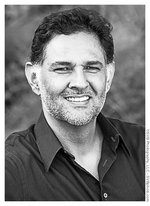
Dr. Eduardo Obregón Pagán is the Bob Stump Endowed Professor of History at Arizona State University, and Associate Dean of Barrett, The Honors College. He is the author of Murder at the Sleepy Lagoon: Zoot Suits, Race, and Riot in Wartime L.A. (University of North Carolina Press, 2004), and Valley of the Guns: The Pleasant Valley War and the Trauma of Violence (University of Oklahoma Press, 2018). He was a co-host on the popular PBS series History Detectives, and is an adjunct curator of history at the Desert Caballeros Western Museum.




